ISSN ONLINE(2278-8875) PRINT (2320-3765)
ISSN ONLINE(2278-8875) PRINT (2320-3765)
Fehim Velic1, Alija Muharemovic2
|
| Related article at Pubmed, Scholar Google |
Visit for more related articles at International Journal of Advanced Research in Electrical, Electronics and Instrumentation Engineering
In underground mines, methane is allowed to use only the ventilation pipes that are made of antistatic materials. In order requirement for electrical conductivity was filled, it is necessary that the surface resistance of ventilation tubes is less than 108 Ω [9]. Ventilation ducts for ventilation of blind facilities in underground mines, are usually long after a few hundred meters, which means that they are composed of multiple tubes, which are usually produced in lengths of 10 m. To a distortion of electrical resistance may arise if the joints between pipes are bad, what would lead to the formation of islands with extensive exposure to static electric charges, which would be threatened with defeat breakdown strength of air of 3 MV/m, because the generation of static electricity due to continuous air flow process. In other this work will be presented to the measurement methods with which to control the quality circuit between the ventilation pipes in real conditions and with the results of measurements. Control and monitoring of static electricity is particularly important in underground methane mines, in order to prevent the occurrence of electrostatic sparks, which could cause an explosion.
Keywords |
| Ventilation pipe, Static electricity, Methane mines. |
INTRODUCTION |
| Modern mining involves the use of machines for the hallway, or the preparation of new fields of mining, which significantly increased the pace of work, or what entails the need to blind mine openings are as long as possible. It would be possible to ventilate this long cave site is necessary for their ventilation fans use high power, which more friction on the wall of the ventilation pipes, or generate a greater amount of static electricity. For ventilation mining site most frequently applied ventilation pipe length of 10 m, which means that it will be necessary to use a large number of ventilation. For compression ventilation mine site used pipes made of technical textiles with bilateral PVC coating that is non-flammable (oxygen index above 27%), surface resistance below 108 Ω, with non-flammable technical fabric which is resistant to oil and solvent vapor. |
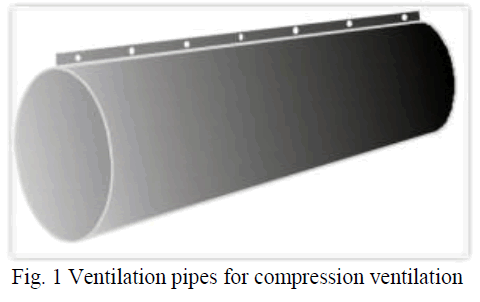 |
GENERATION OF STATIC ELECTRICITY IN THE VENTILATION PIPES |
| Due to the flow of air through the ventilation pipe speed v(t) (m/s), in a space with an increased concentration of explosive mixtures, the inner and the outer surface of the vent pipe leads to the emergence of electric load q(t) or ionized molecules n(t). Thus, distributed electrical load q(t) on the surface of ventilation tubes participate in the process of discharge, both mutually and with the metal parts of certain plants, if they are located in neposednoj near the ventilation pipes. In case of failure to take measures to combat static electric charges, such discharges may reach the minimum ignition energy present concentration of explosive mixtures [1,7]. |
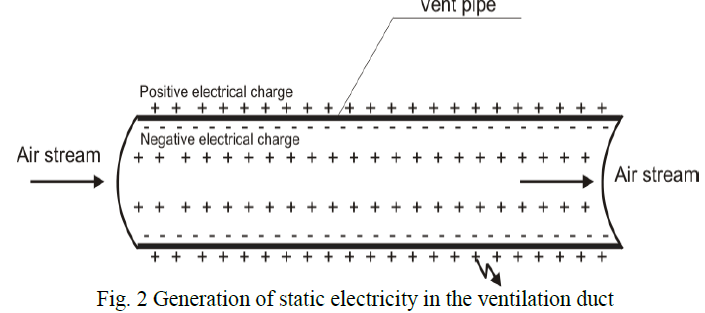 |
| What is actually happening in terms of electrical engineering in the described process? Forming the electrostatic system that can be represented by simple electrical equivalent circuit shown in Fig. 3. It consists of only four elements. The first is the power generator I which is the mechanism of charge in the specific technological process, the formation of the charge will be a continuous process (air flow through the vent tube). The second element is a capacitor C in which the electrical charge builds up (in this case it is a ventilation duct). The third element is a resistance R, which is the mechanism of relaxation of charge in an electric insulator strained. Relaxation process will usually be a small current flow or the volume of the insulator or along its surface (in this case an insulator is the air that surrounds the ventilation duct). Finally, we include the gap for a spark which limits the maximum voltage that can be achieved in the system. |
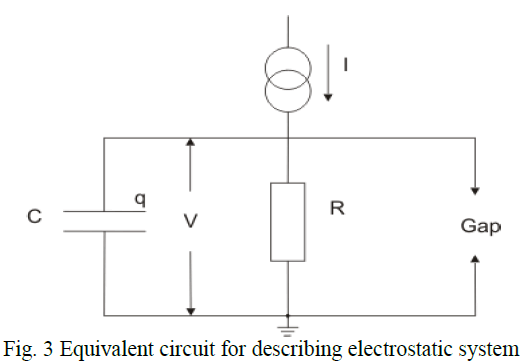 |
| The potential of the conductor in time is given by the equation: |
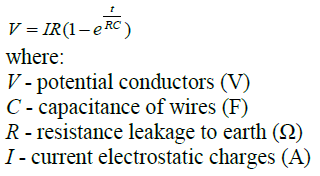 |
| t - the time from the beginning of charging (s). |
| At the beginning of the process we can assume that the capacitor was empty. Electricity generators will initially charge the capacitor causing the voltage V on it increases. As the voltage increases, part of the current will begin to flow through the resistance R. With increasing voltage, proportional, an increasing part of the current will flow through the resistance. In the absence of other effects, the system will eventually reach a steady state, when any resulting current flowing into the country through R.Whether the system will lead to significant electrostatic effects depend on the size of the Vmax, and especially the size of the generated electric field in the insulator in which this voltage occurs. Resistance to earth leakage and capacitance of the insulated conductor can often be measured and it is then used to determine whether a hazardous level of electrical charge can accumulate [1-2,7]. |
MEASUREMENT OF TRANSIENT RESISTANCE COUPLING THE VENTILATION PIPES |
| To ventilation pipe or vent pipe meet the requirement for electrical conductivity according to current regulations, it is necessary that the surface resistance of ventilation tubes is less than 108 Ω, which is achieved with exceptional smoothness inside the ventilation pipes. Since the value of surface resistance affects the proper installation of ventilation tubes. The easiest way to check whether the ventilation pipes are installed correctly, in terms of the removal of static electricity, is to make the measurement of the surface resistance between the hanger and standard ventilation pipe [2,8]. |
1. Measuring the transition resistance between the metal mass of fans and blowers |
| To check the quality of the connection between the first ventilation pipes and ventilation of water, can be used measurement method shown in Fig. 4. Measure the resistance value between the metal mass of the fan and the first hook on the first air circulation pipes. |
 |
| In TABLE I. presents the results of measuring surface resistance between the hanger ventilation pipes The measurement is megaommetrom "Smartec" MI 2123, Metrel, IEC 61557 / IEE ed. 16, 500 V DC, the one pipe venilaciong water blind mine openings in the coal mine "Kakanj" and the ventilation duct complex mechanized forehead. |
| TABLE I. Presentation of results of surface resistance between the metal mass of the fan and the first hook in an air circulation pipe |
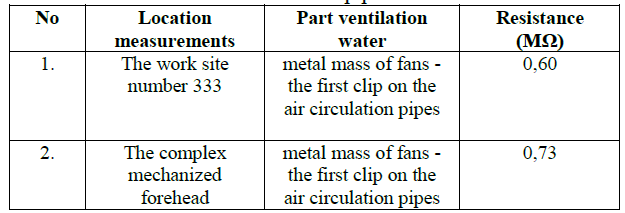 |
2. Measurement of resistance between two adjacent hooks ventilation pipes |
| To check the quality of the resulting connection between the two ventilation pipe, one ventilation line, can be used measurement metpde described in Fig. 5. In Fig. 5 presents the measurement method in which the measurement of the transition resistance is made between the last hook on one of the first air circulation tube and hook the pipe which it binds. |
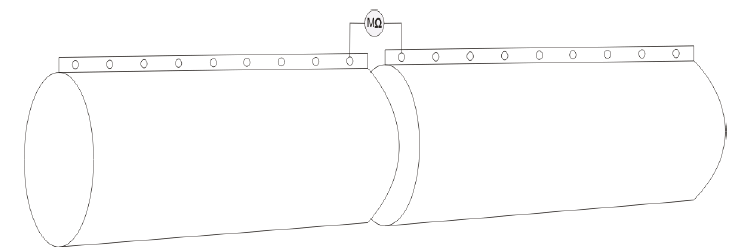 |
| Fig. 5 Measurement of resistance between the hinges on the last one and the first hook at the next air circulation pipe |
| In TABLE II. presents the results of measurements of transient resistance last hook on one of the first and the hinges on the pipe that comes after it. The measurement is megaommetrom "Smartec" MI 2123, Metrel, IEC 61557 / IEE ed. 16, 500 V DC, on a sample of ten joints between the ventilation pipes, one ventilation water blind mine openings in the coal mine "Kakanj". |
| TABLE II. Presentation of results of surface resistance between the hinges on the last one and the first hook at the next tube (work site no. 333) |
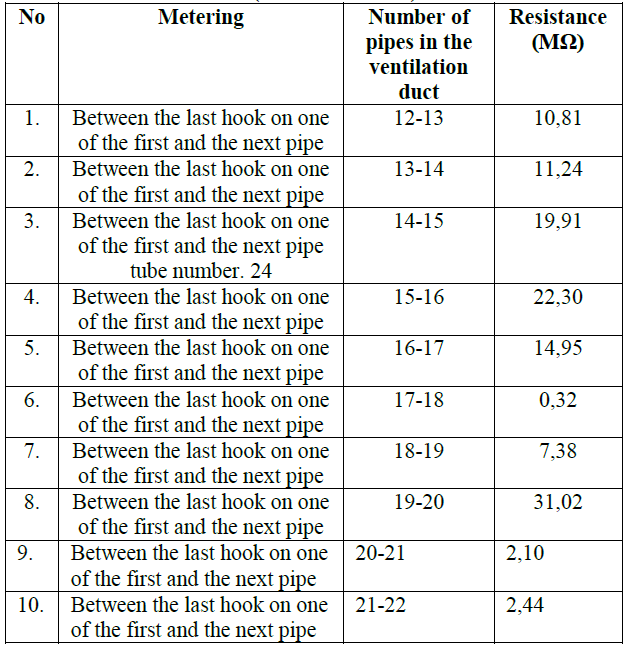 |
| 3. Measurement of resistance between the loops of copper, 10 mm2 cross-section mounted on the end of one and the beginning of the next ventilation pipes |
| In Fig. 6 shows the measuring method in which the quality check of the compound between the two ventilation pipe is performed in a way that the transition resistance is measured between the copper loop diameter of 10 mm2, positioned at the end or at the beginning of the vent pipe. |
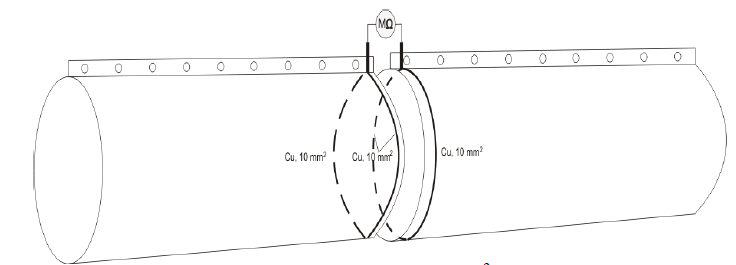 |
| Fig. 6 Measurement of resistance between the loops of copper, 10 mm2 cross-section mounted on the end of one and the beginning of the next ventilation pipes |
| In TABLE III. presents the results of measurements of transient resistance between the loops of copper conductors with a diameter of 10 mm2, which is set at the end of one and the beginning of the next ventilation tubes. The measurement is megaommetrom "Smartec" MI 2123, Metrel, IEC 61557 / IEE ed. 16, 500 V DC, on a sample of ten joints between the ventilation pipes, one ventilation water blind mine openings in the coal mine "Kakanj". |
| TABLE III. Presentation of results of surface resistance between the loop (Cu, 10 mm2) are positioned at the end of one and the beginning of the next pipe, the distance between each other |
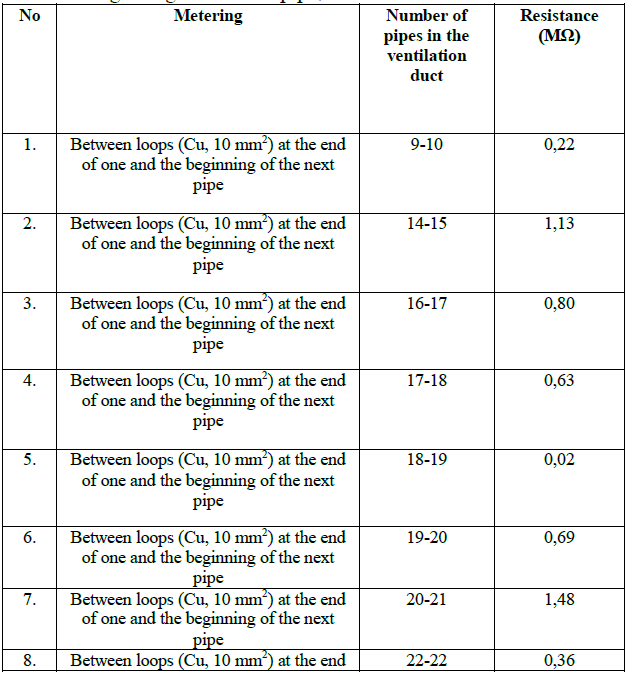 |
 |
CONTROL THE PRESENCE OF STATIC ELECTRICITY |
| Is it in certain plants, parts of plants or installations static electricity, we can check the measurements with instruments for testing of static electricity. Instruments for testing of static electricity can be divided into three groups, namely: |
| 1) indicators and detectors static electricity - by which only establishes that in some places there is static electricity; |
| 2) electrometers - to measure static electricity. They are used when you need to determine not only the presence but also the amount of static electricity; |
| 3) registering instruments - that register the amount of static electricity. They are used when you need to constantly and continuously monitor the amount of static electricity in some places[3-5]. For testing of static electricity in explosive zones is necessary to use the instrument in explosion-proof. One such instrument is shown in Fig. 7. |
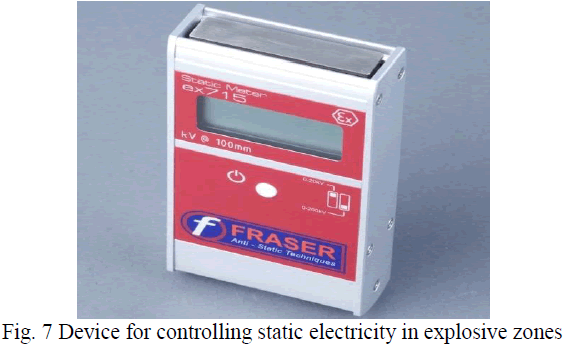 |
| In this some work will be the results of measurements of static electricity, which was performed by statometra type: EX 715, manufacturers Fraser. The measurement was performed on the ventilation pipes for ventilation of the blind rooms underground mine Kakanj. In TABLE IV. presents the results of measurements of static electricity. |
| TABLE IV. Presentation of results static electricity on the ventilation duct for ventilation blind mine openings |
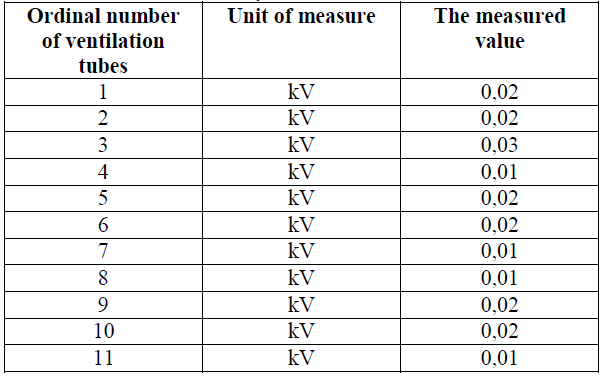 |
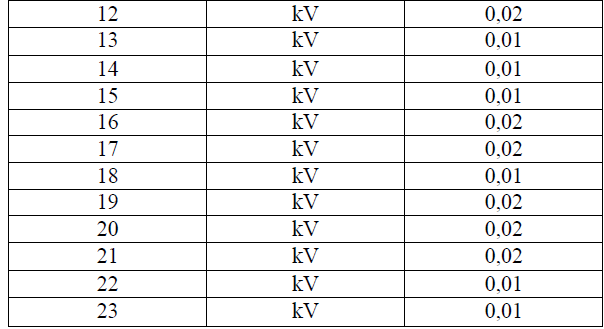 |
CONCLUSION |
| This work presents the measurement methods with which to check the quality of a compound of ventilation tubes, one ventilation water, or the state of its surface resistivity in terms of methane underground mines. If the value of surface resistivity was higher than makslimalno permissible value of 108 Ω, it is a sign that should be inspected as ventilation pipes connected, or whether it violated anti-static properties of the entire water. In a similar way one can check the status of each resistance ventilation pipes themselves. This measurement method can greatly contribute to reducing the risk of occurrence of electrostatic sparks, which can cause an explosion in terms of explosive atmospheres. You control in quantities of accumulated static electricity can also be done using an instrument to control the accumulated static electricity to any part of the ventilation water which gives us a clearer picture of whether the accumulated static electricity from the ventilation pipes drained in a safe way. |
References |
|